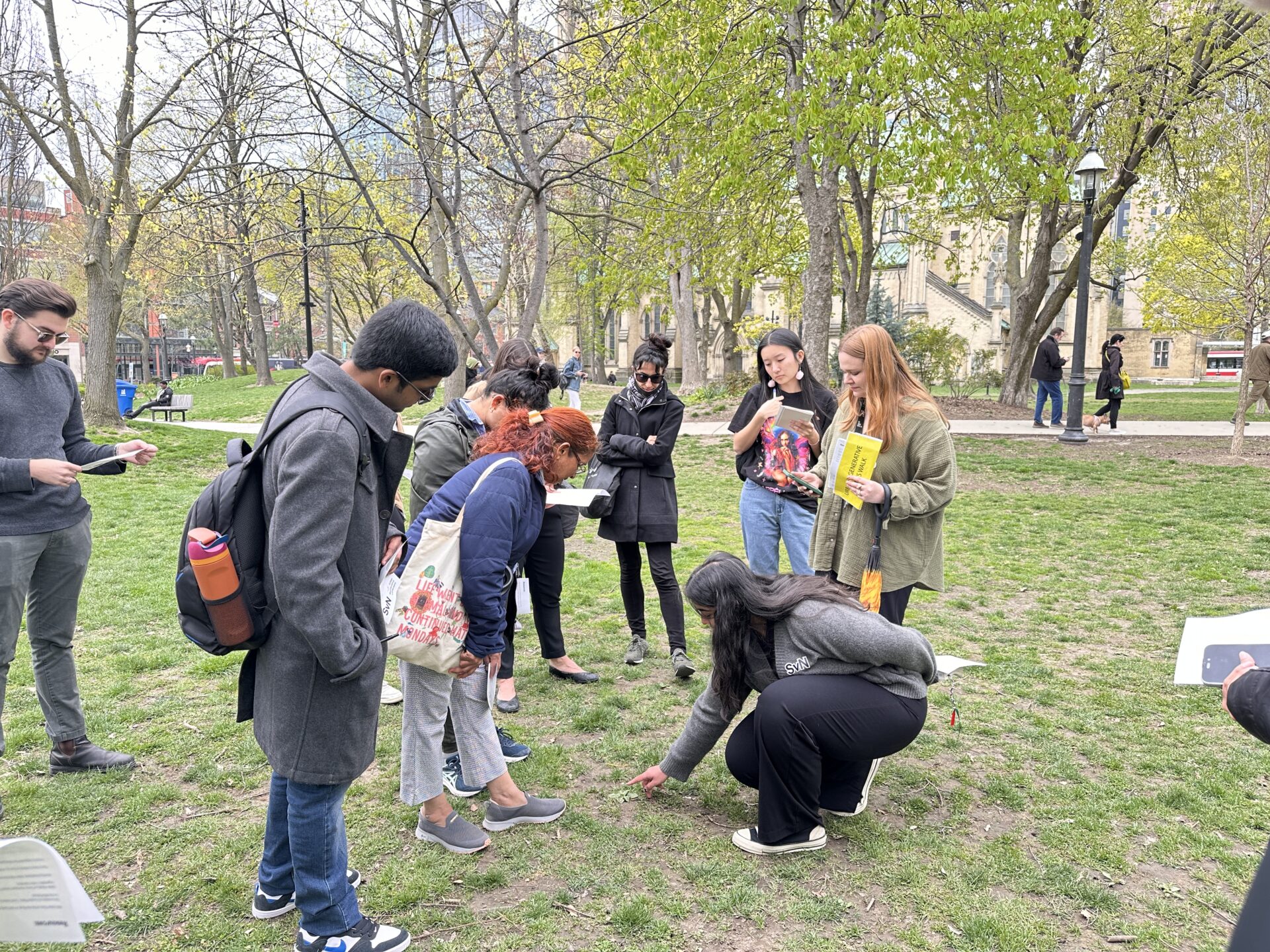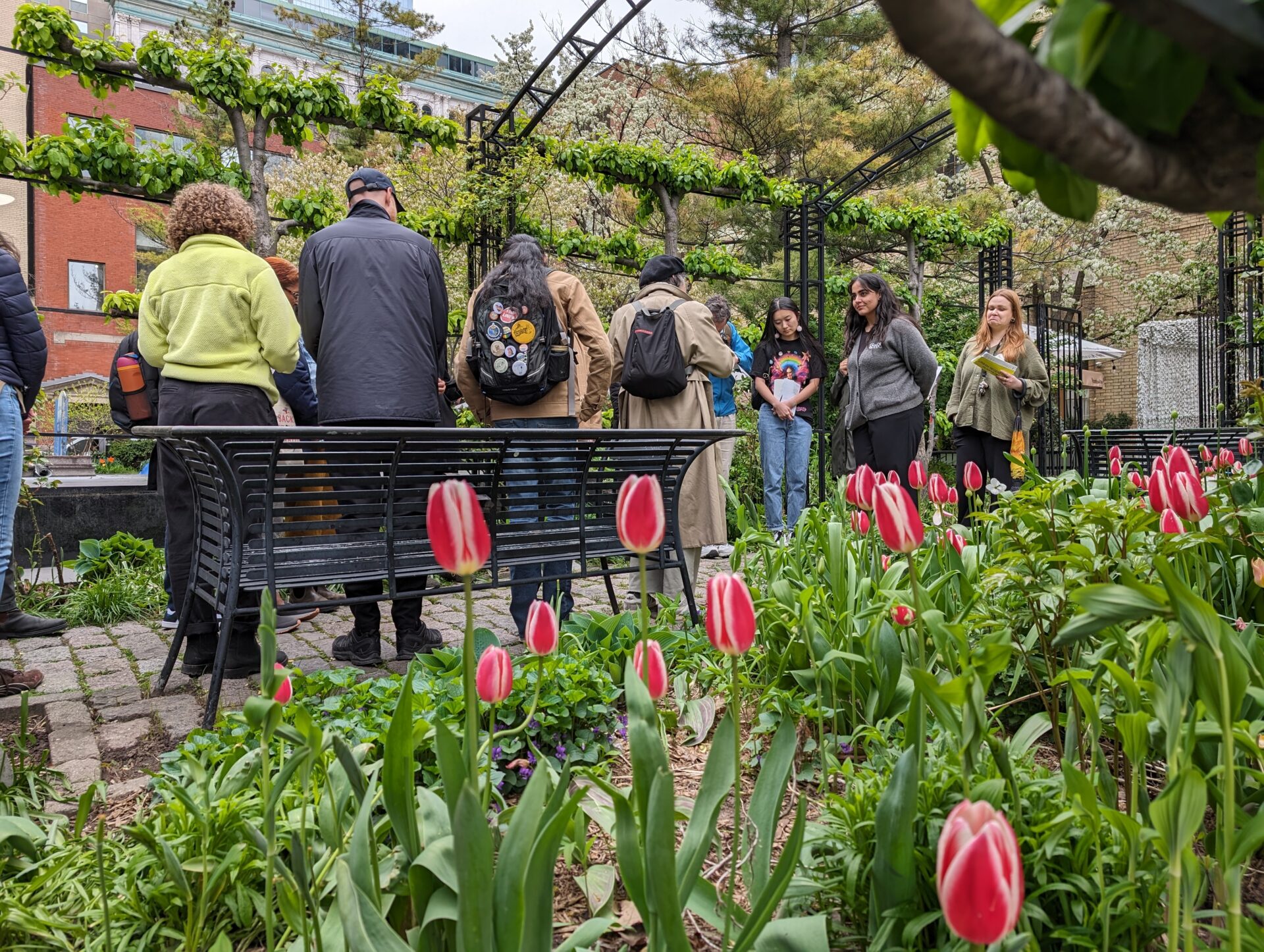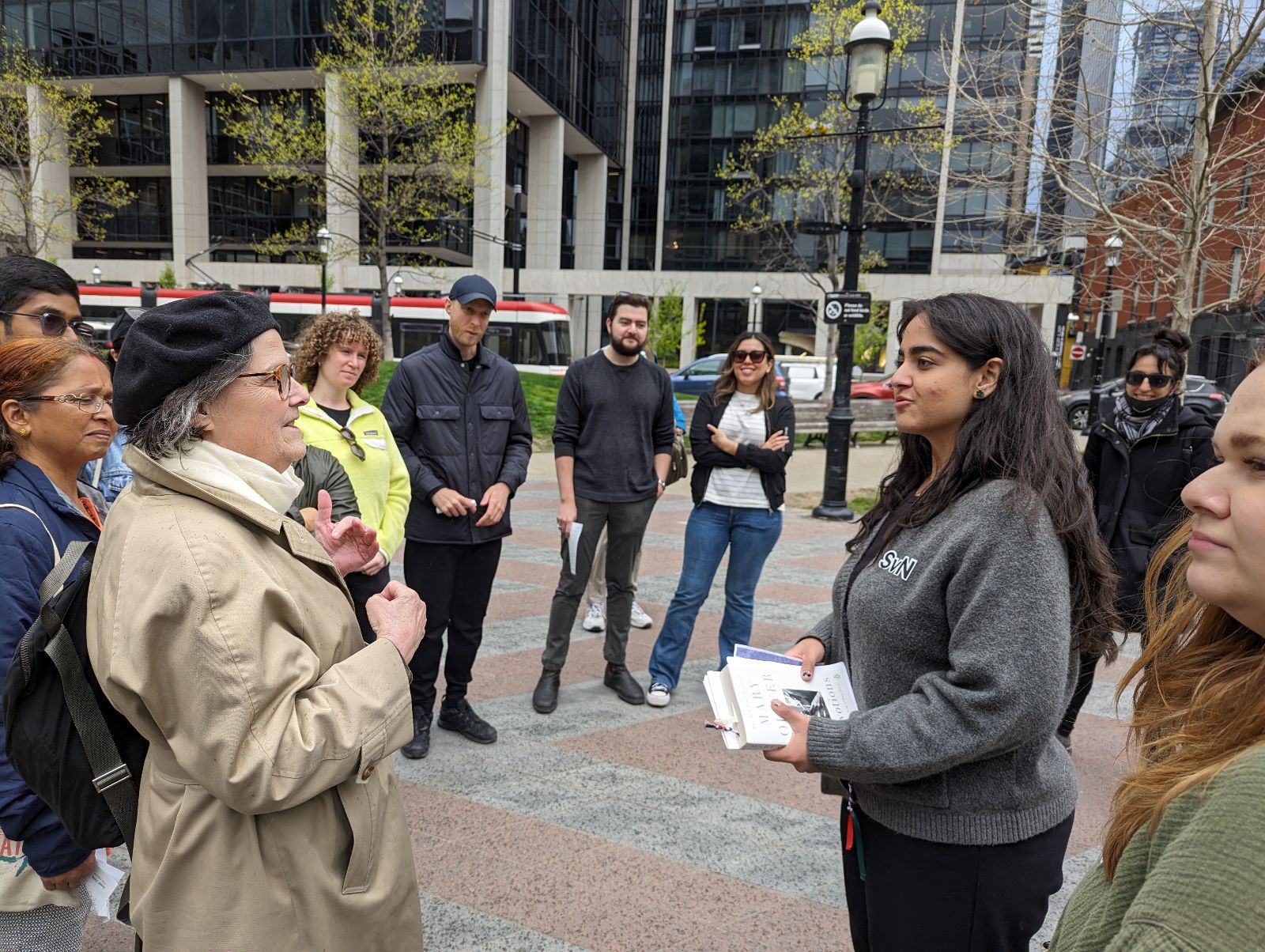Urban Regenerative Landscapes: A Jane’s Walk Recap

Urban Regenerative Landscapes: A Jane’s Walk Recap
This year we had the pleasure of participating in Jane's Walks, a festival of community-led walking tours inspired by noted Toronto urbanist, Jane Jacobs. Our walk offered a unique exploration of our urban landscape that focused on the symbiotic relationship between nature and the built environment. Through an interactive rediscovery of Downtown Toronto, we uncovered the often overlooked beauty of plants thriving in spaces that weren't built for them.
Before we began the walk, we distributed our Urban Plants Guide, inviting everyone who came to actively observe and document the diverse flora encountered along the way.
Stop 2: Dandelions - What Can Our New Relationship Look Like? At the Cathedral Church of St. James, the bright colors of dandelions caught participants' attention. Amidst the rise in ecological activism of past decades, Kiran highlighted the importance of forming stronger bonds with the land, drawing inspiration from Indigenous perspectives rooted in reciprocity, respect and the intrinsic value of all living beings.
Stop 3: Horseweed - Public Art Walking along Church Street, Kiran discussed the overlooked features of horseweed, symbolizing endurance against the harshest conditions. Against a mural painted by Nunavut artists, participants reflected on the connections between art, nature, and human influence, as Kiran made a case for the untamed beauty of the natural world.
Stop 4: Violets - Looking Forward Our third stop was Courthouse Square Park, a peaceful pocket park. Here Kiran revealed the delicate presence of violets, emphasizing the interconnectedness between humans and the natural world. Before wrapping up, Kiran left everyone with a question: Beyond aesthetics, should we prioritize the preservation of wildflowers for their practical benefits in food and medicine?
As the group arrived at Berczy Park, designed by CCxA, Kiran Khurana bid farewell to participants, encouraging them to take note and greet emerging plants as the seasons change. Through her engaging narrative, Kiran revealed the hidden beauty of Toronto's urban landscape. Her message of renewal and regeneration inspires us to see things differently, to build a new politics and forge stronger connections between us and the natural world that surrounds us.
Thank you to Kiran for leading this walk, The Jane’s Walk Steering Committee and City Organizers for coordinating the festival every year, and to everyone who joined us in exploring our thriving local landscape.
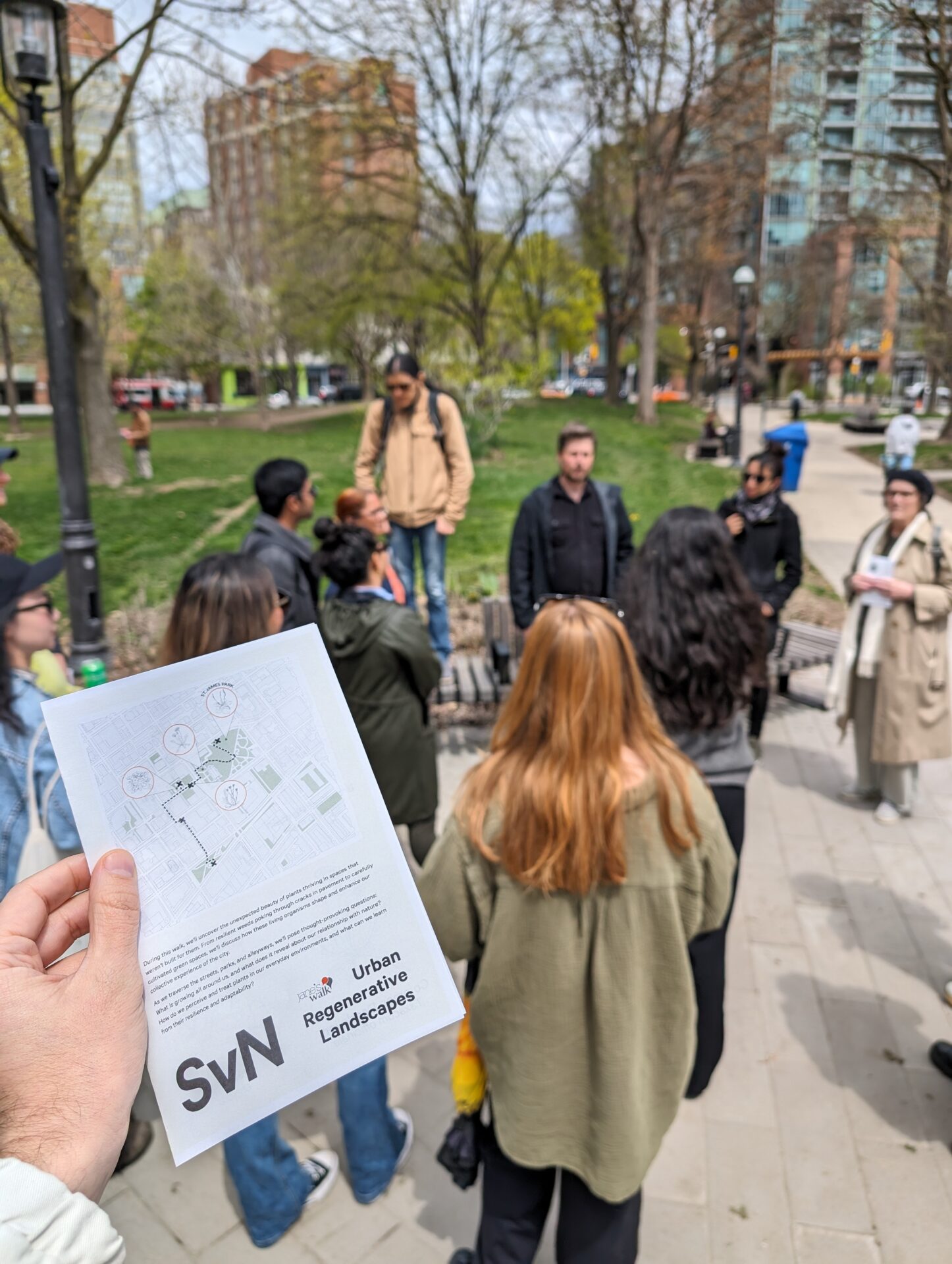
Before we began the walk, we distributed our Urban Plants Guide, inviting everyone who came to actively observe and document the diverse flora encountered along the way.
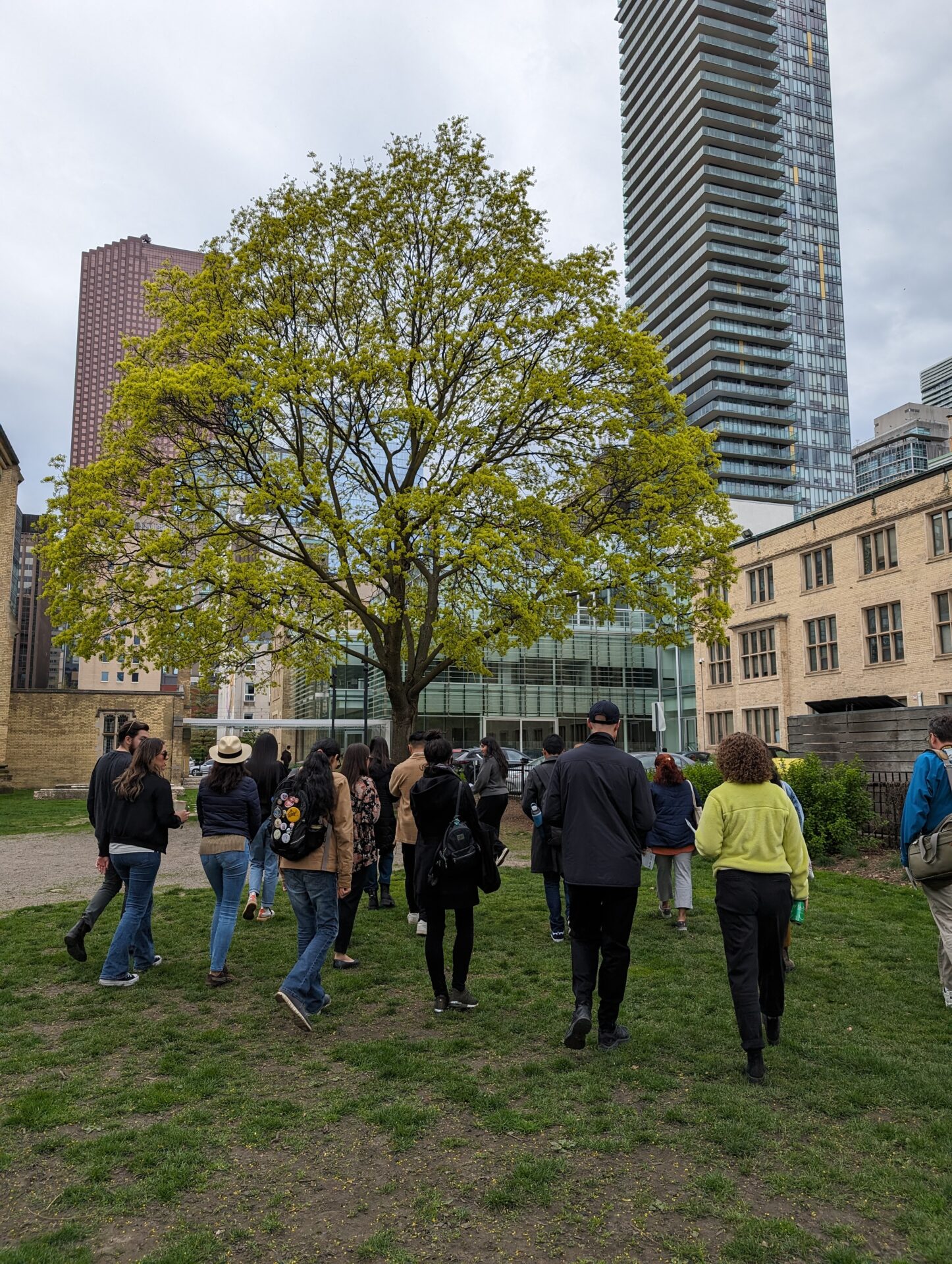
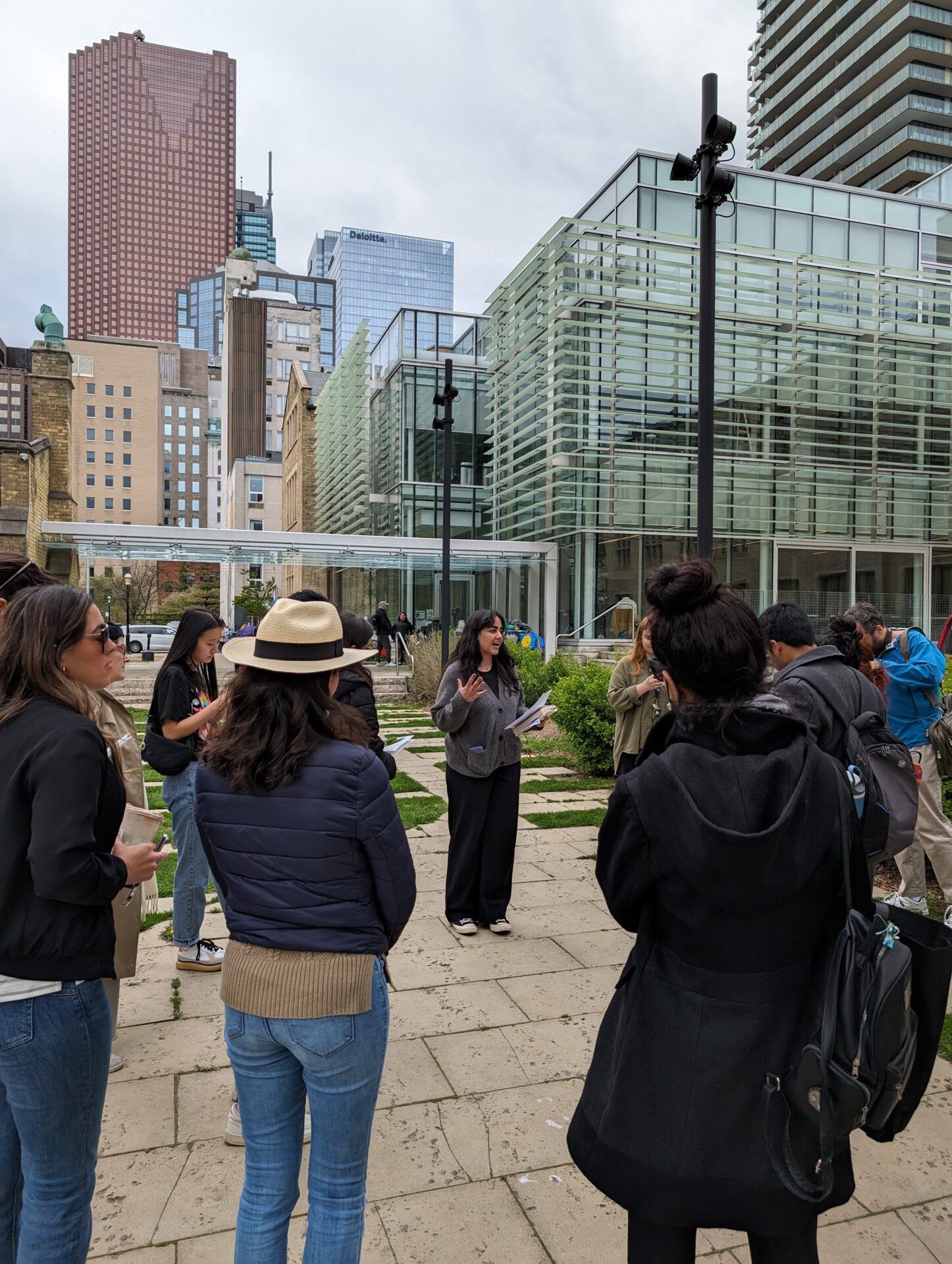
Stop 2: Dandelions - What Can Our New Relationship Look Like? At the Cathedral Church of St. James, the bright colors of dandelions caught participants' attention. Amidst the rise in ecological activism of past decades, Kiran highlighted the importance of forming stronger bonds with the land, drawing inspiration from Indigenous perspectives rooted in reciprocity, respect and the intrinsic value of all living beings.
Stop 3: Horseweed - Public Art Walking along Church Street, Kiran discussed the overlooked features of horseweed, symbolizing endurance against the harshest conditions. Against a mural painted by Nunavut artists, participants reflected on the connections between art, nature, and human influence, as Kiran made a case for the untamed beauty of the natural world.
Stop 4: Violets - Looking Forward Our third stop was Courthouse Square Park, a peaceful pocket park. Here Kiran revealed the delicate presence of violets, emphasizing the interconnectedness between humans and the natural world. Before wrapping up, Kiran left everyone with a question: Beyond aesthetics, should we prioritize the preservation of wildflowers for their practical benefits in food and medicine?
As the group arrived at Berczy Park, designed by CCxA, Kiran Khurana bid farewell to participants, encouraging them to take note and greet emerging plants as the seasons change. Through her engaging narrative, Kiran revealed the hidden beauty of Toronto's urban landscape. Her message of renewal and regeneration inspires us to see things differently, to build a new politics and forge stronger connections between us and the natural world that surrounds us.
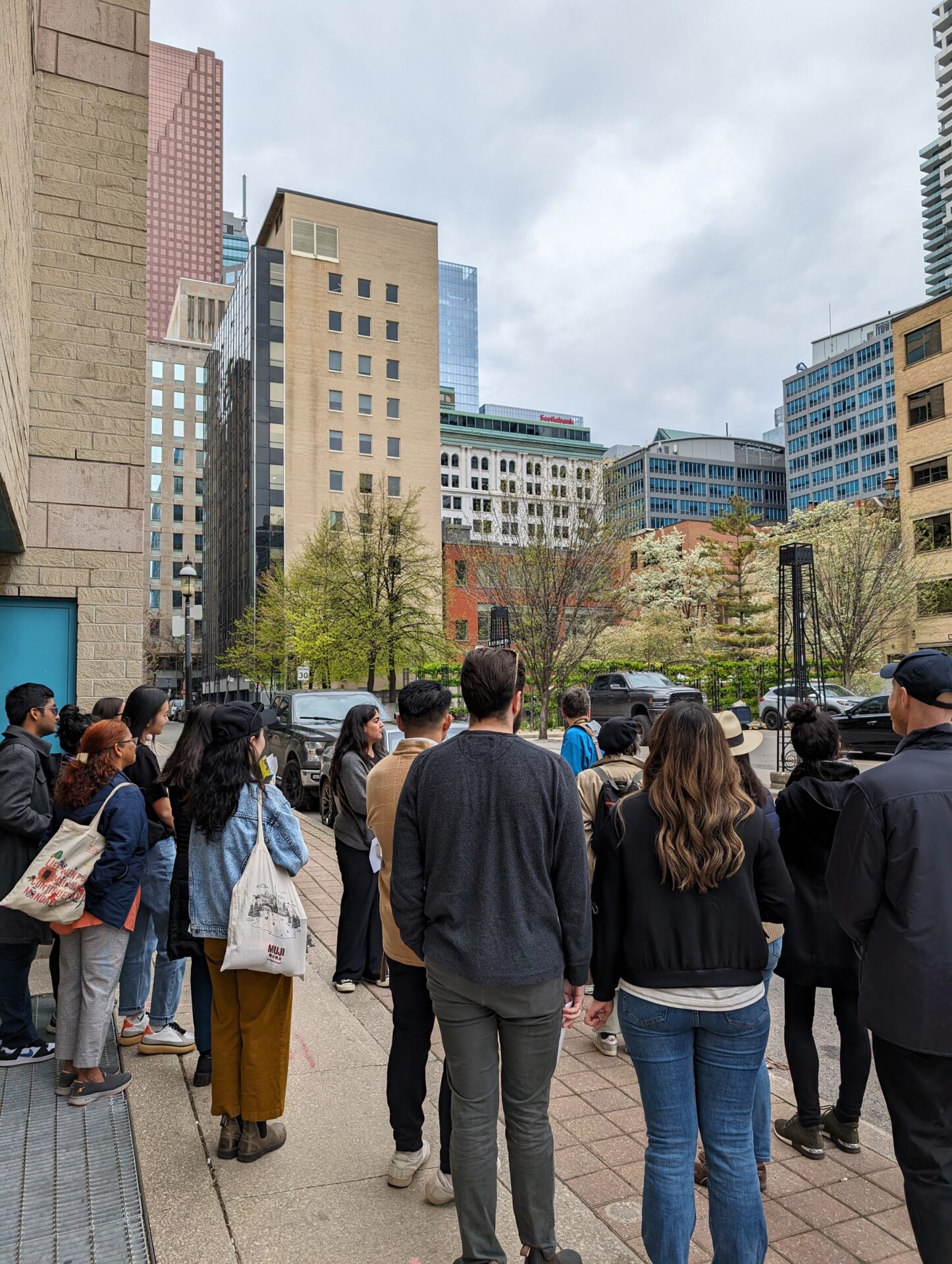
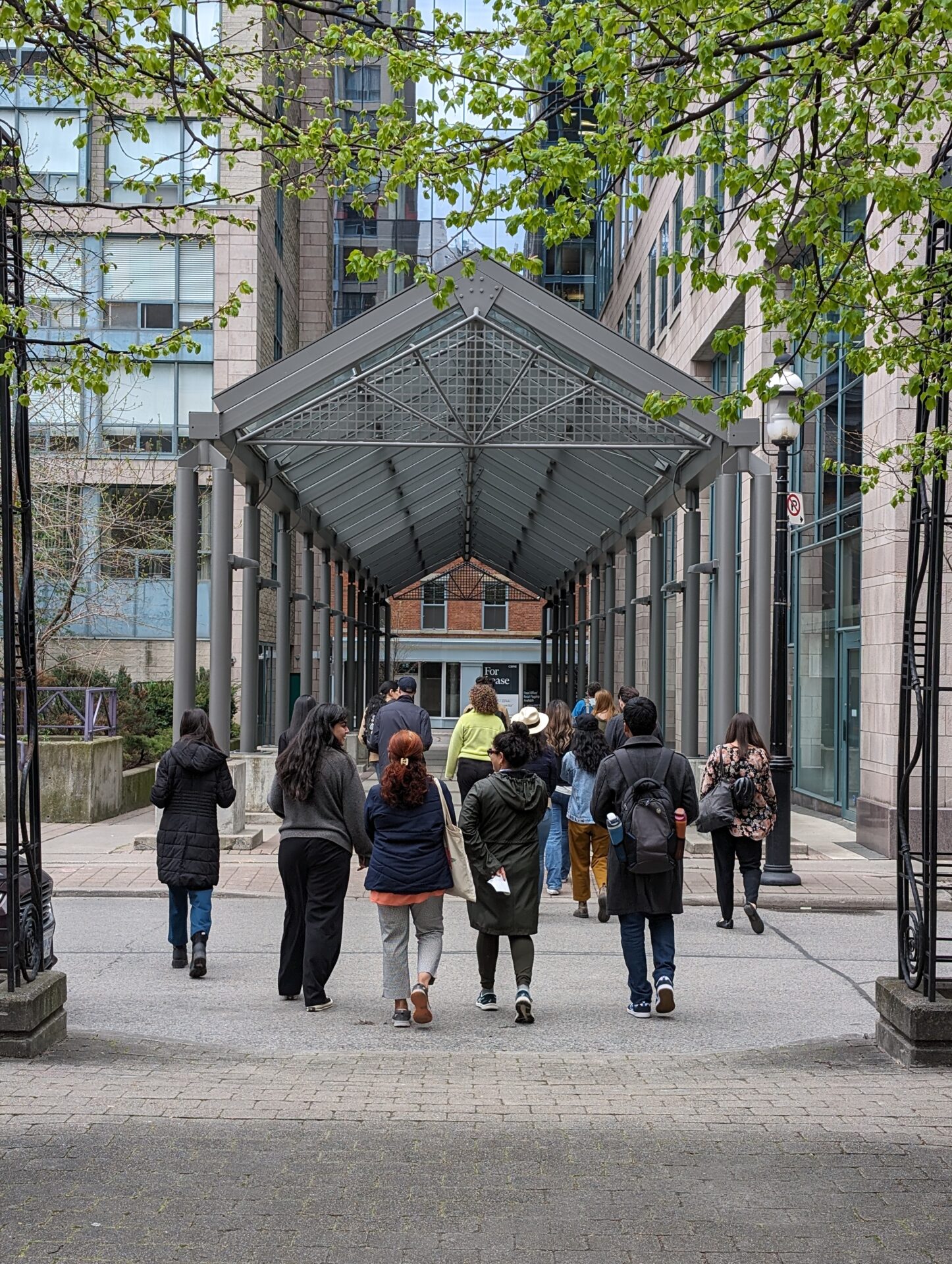
Thank you to Kiran for leading this walk, The Jane’s Walk Steering Committee and City Organizers for coordinating the festival every year, and to everyone who joined us in exploring our thriving local landscape.
